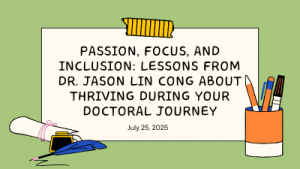Over the last twenty years or so, many barriers to the implementation of effective feedback processes have been discussed: comments are brief, unclear, too harsh or not actionable. In this blog, I am going to unpack a key challenge that feedback does double duty in that it conflates multiple competing functions: praise, advice and judgments.
The concept of double duty was introduced by David Boud in his classic article on sustainable assessment. In essence, assessment does double duty because it encompasses formative assessment for learning as well as summative assessment for certification. In attempting to address dual assessment purposes, we are in danger of sabotaging one of them (Boud, 2000).
In my book, Excellence in University Assessment, I applied the double duty idea to feedback rather than assessment to denote the different, and competing, functions of feedback. I identified five functions: advice for student improvement of current or future work; comments as justification of the mark and/or protection from student complaint; feedback for quality assurance purposes to satisfy an auditor or external examiner; comments to demonstrate diligence and/or respect for the student work; and feedback for enhanced learner development of self-regulation strategies (Carless, 2015). When feedback is doing so many things, it is no wonder that receivers end up dissatisfied or confused.
In later empirical work with Naomi Winstone, interviews with twenty-eight educators from a range of higher education institutions in the UK brought to the fore dissonances between feedback as satisfying the requirements of quality assurance agendas, and supporting students’ development. We argued for an emphasis on the role of students, not just teachers, in feedback processes so as to reaffirm the core function of feedback on improving student learning (Winstone and Carless, 2021).
Recently, I have been revisiting one of my favorite popular treatments of feedback in daily life, Thanks for the Feedback by Stone and Heen (2014) and have been reminded of the double duty issue. These authors talk about three kinds of feedback: appreciation (praise), coaching (improvement) and evaluation (performance in relation to standards). Each of these three functions focus on different human needs, so they need to be kept distinct. In practice, however, they are often conflated or participants in feedback exchanges are not in harmony as to which function is being targeted. When individuals crave encouragement and reassurance, coaching for improvement provokes resistance; or when they really want to get ideas to move forward and receive empty praise, they feel frustrated.
So, what can be done to tackle the challenge of feedback doing double duty? A starting-point is awareness of the issue, reminding us that we need to be clear on the purpose of a particular feedback exchange, and that all parties need to have a shared understanding of goals and processes. Being on the same feedback page is crucial. Clarification involves what is referred to in the medical education literature as setting the scene for feedback by building psychological safety (Johnson, Keating, and Molloy, 2020). A starting question is: ‘Are you ready for feedback’? A single wise feedback sentence can make people more receptive to critical feedback: “I’m offering these comments because I have high expectations of you and know you can reach them”. Psychological readiness to reveal vulnerability is crucial. Creating transparency, building trust and offering a learner some control over the feedback exchange prepares the ground for fruitful partnership between participants.
To sum up, feedback doing double duty is challenging and difficult to avoid. One of the best ways to tackle the challenge is to prepare the ground for a productive feedback exchange by identifying shared goals and building trust.
References
Boud, D. (2000). Sustainable assessment: rethinking assessment for the learning society. Studies in Continuing Education, 22(2), 151-167. https://doi.org/10.1080/713695728
Carless, D. (2015). Excellence in University Assessment: Learning from award-winning practice. Routledge.
Johnson, C., J. Keating, and E. Molloy. (2020). Psychological Safety in Feedback: What Does It Look Like and How Can Educators Work With Learners to Foster It? Medical Education 54 (6): 559-570. https://doi.org/10.1111/medu.14154
Stone, D., & Heen, S. (2014). Thanks for the feedback: The science and art of receiving feedback well. Penguin.
Winstone, N., & Carless, D. (2021). Who is feedback for? The influence of accountability and quality assurance agendas on the enactment of feedback processes. Assessment in Education 28(3), 261-278. https://doi.org/10.1080/0969594X.2021.1926221



